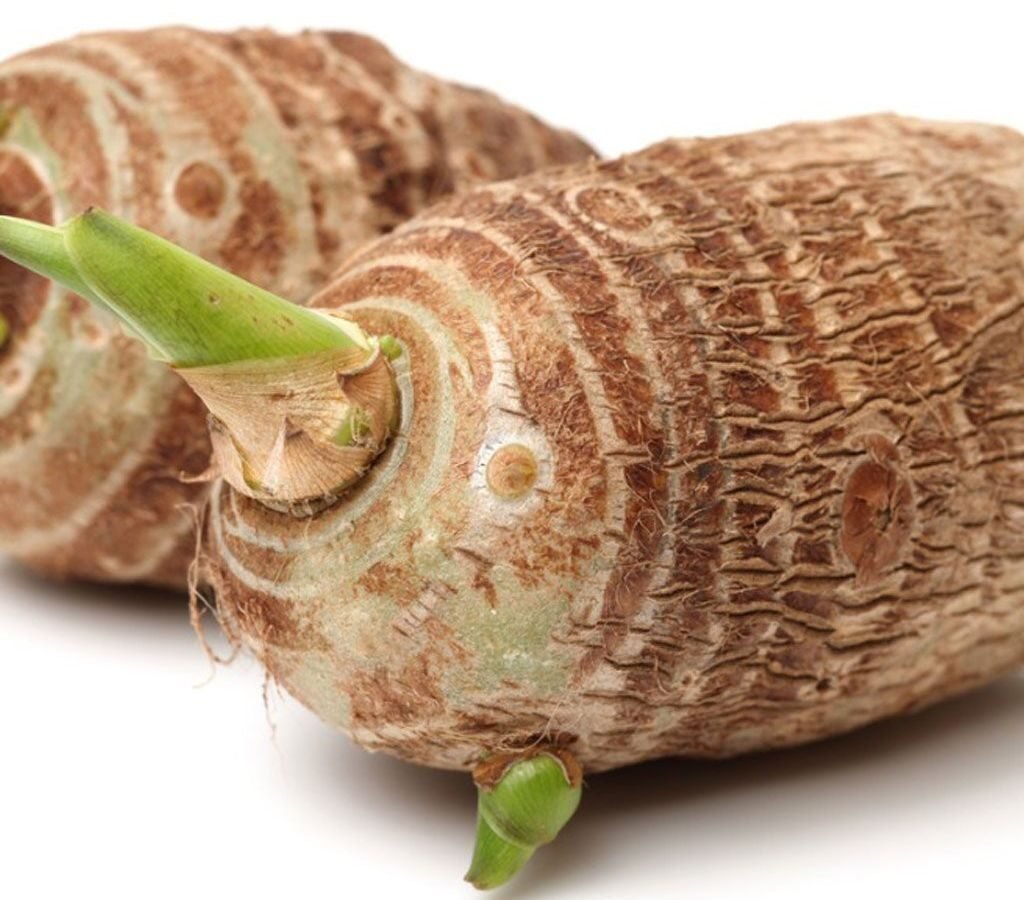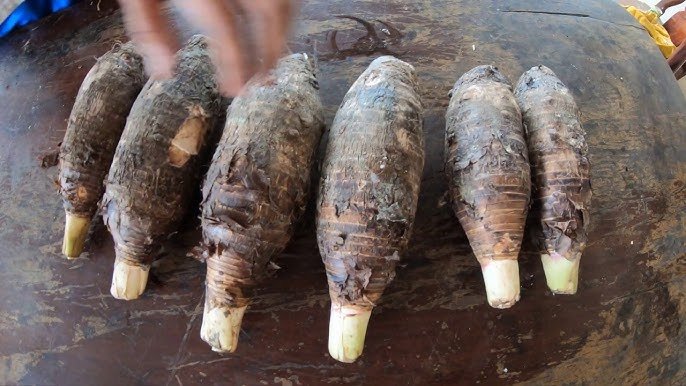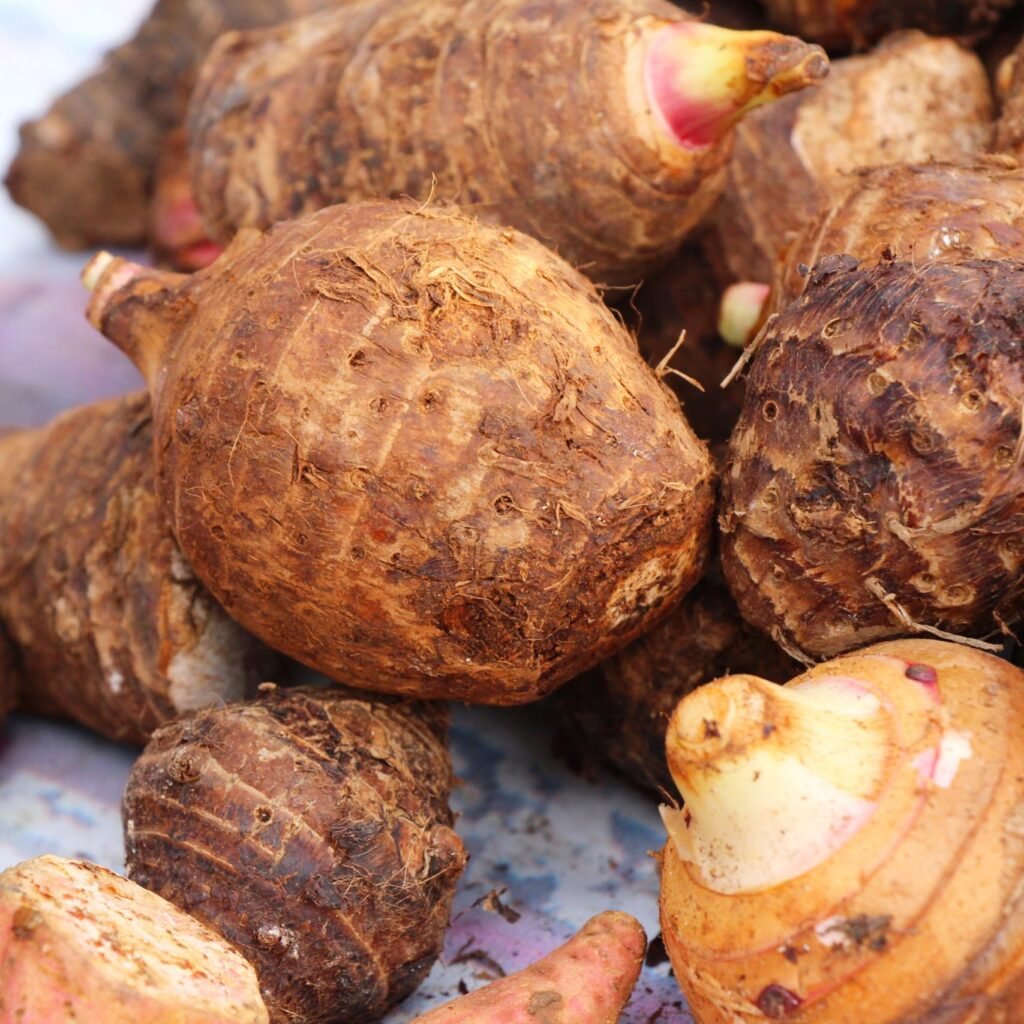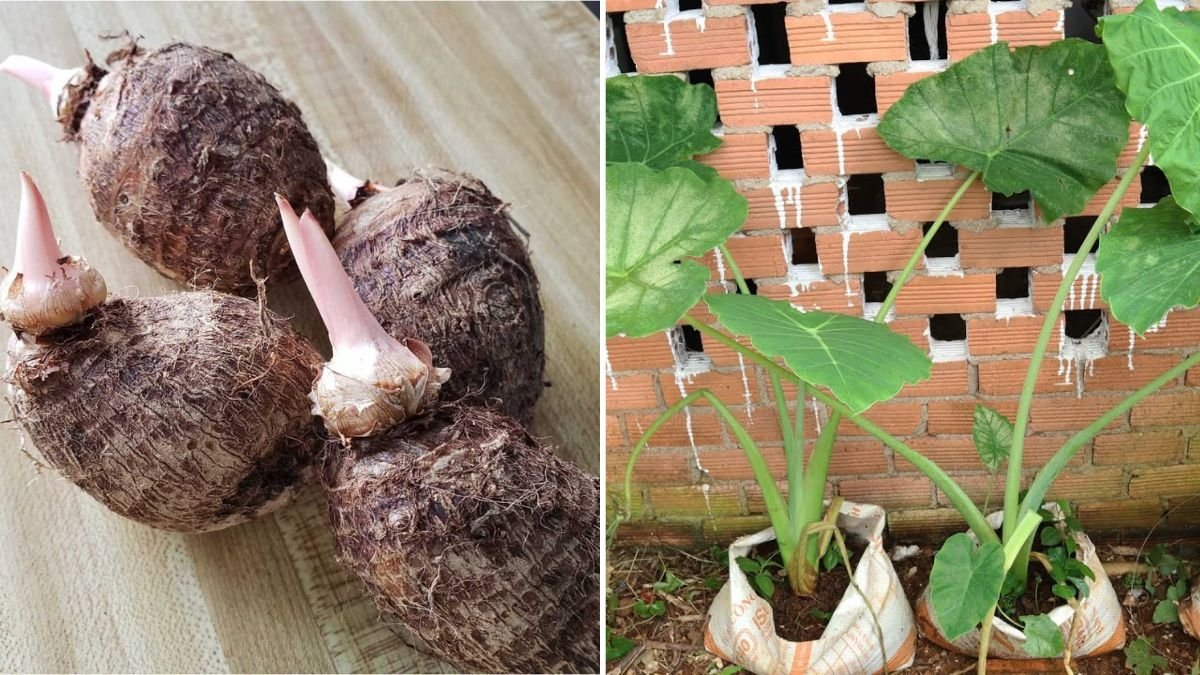In recent years, taro root has gone from being a traditional ingredient in Asian and Pacific Island cuisines to a trending superfood in American wellness circles. Its beautiful purple hue, creamy texture, and subtle nutty flavor have made it a favorite in bubble tea shops, healthy cafes, and gluten-free home kitchens alike.
But taro is more than just an Instagram-worthy ingredient — it’s a nutrient-dense, fiber-rich, and versatile root vegetable that fits seamlessly into a variety of diets, from vegan to paleo. Whether mashed, baked, steamed, or turned into chips, taro root is winning hearts across the U.S. for its flavor, health benefits, and culinary adaptability.
This article dives deep into everything you need to know about taro — its history, nutritional value, health benefits, popular uses, and how to enjoy it in your everyday meals.
What Is Taro Root?

Taro root (Colocasia esculenta) is a starchy tuber that grows underground, similar to potatoes or sweet potatoes. It has a brown, hairy skin and a white or pale purple interior speckled with violet flecks. Native to Southeast Asia and the Pacific Islands, taro has been cultivated for more than 5,000 years and is considered one of the world’s oldest food crops.
It’s now grown across tropical and subtropical regions, from Hawaii and the Caribbean to Africa and South America. In the U.S., taro is most commonly found in Hawaiian cuisine, where it’s the key ingredient in the traditional dish poi — a smooth, mashed taro paste enjoyed as a side or base food.
Nutritional Profile of Taro Root
Taro isn’t just a carb-rich comfort food — it’s also loaded with fiber, antioxidants, and essential vitamins. A 100-gram serving of cooked taro root typically contains:
- Calories: ~140
- Carbohydrates: 34g
- Protein: 1.5g
- Fiber: 5g
- Fat: <0.2g
- Vitamin E: 6% of Daily Value (DV)
- Vitamin B6: 15% of DV
- Potassium: 10% of DV
- Manganese: 30% of DV
- Magnesium, Copper, and Iron: Small to moderate amounts
Taro is naturally gluten-free, low in fat, and cholesterol-free, making it an excellent choice for those following clean-eating, vegan, or heart-healthy diets.
Top Health Benefits of Taro Root

1. A Gut-Friendly Carb
Taro root is packed with resistant starch and soluble fiber, both of which support digestive health. These nutrients feed beneficial gut bacteria and help maintain smooth digestion, reducing bloating and promoting a healthy microbiome.
2. Supports Stable Blood Sugar
Despite being rich in carbohydrates, taro’s low glycemic index means it releases energy slowly. This helps prevent blood sugar spikes, making it a better option for people managing diabetes or insulin resistance compared to white potatoes or refined grains.
3. Boosts Heart Health
The potassium in taro root helps regulate blood pressure, while its fiber content aids in lowering cholesterol. Both benefits support cardiovascular wellness and may reduce the risk of heart disease.
4. Great for Skin and Immunity
Rich in antioxidants like vitamin E, polyphenols, and anthocyanins, taro helps fight free radicals, promoting youthful skin and reducing inflammation. These compounds also strengthen the immune system and protect against chronic diseases.
5. Allergy-Friendly and Gluten-Free
Taro is a great alternative for those avoiding gluten, soy, or nuts. It’s gentle on the stomach, hypoallergenic, and perfect for celiac-friendly or AIP (Autoimmune Protocol) diets.
Taro vs. Other Roots: How It Compares
| Root Vegetable | Texture | Flavor | Key Benefits |
|---|---|---|---|
| Taro | Creamy and dense | Nutty and subtly sweet | High fiber, low GI, antioxidant-rich |
| Potato | Fluffy and starchy | Mild | Good potassium source but higher GI |
| Sweet Potato | Moist and sweet | Sweet and earthy | Beta-carotene and vitamin A |
| Yuca (Cassava) | Chewy | Mild and nutty | Gluten-free and high in carbs |
Taro’s unique creaminess and purple tint make it a standout — perfect for desserts and drinks where color and texture matter just as much as flavor.
Popular Taro Dishes Around the World

Taro’s global appeal comes from its adaptability — it fits beautifully into both savory and sweet dishes. Here are a few favorites from around the world:
- Hawaiian Poi: Mashed steamed taro with a slightly tangy flavor, served as a staple dish in Hawaiian cuisine.
- Chinese Taro Boba Milk Tea: A rich, purple-hued drink made with taro puree, milk, and tapioca pearls.
- Filipino Taro (Gabi) Stews: Used in hearty dishes like Laing (taro leaves in coconut milk).
- Caribbean Taro (Dasheen) Soup: A creamy, spiced soup made with coconut, herbs, and taro.
- Japanese Taro (Satoimo) Stew: A root vegetable stew featuring taro simmered in soy sauce and dashi broth.
Taro in Modern American Diets
Today, taro has found a fresh identity in the U.S. health and wellness scene. Its natural beauty and mild sweetness make it a popular choice in vegan desserts, smoothie bowls, bubble teas, and gluten-free baking.
In fact, the “taro flavor” trend has exploded across American food culture — showing up in:
- Taro ice cream and lattes
- Purple taro pancakes and waffles
- Taro smoothie bowls topped with granola
- Grain-free taro flour baking mixes
This root has become synonymous with wellness-meets-aesthetics, appealing to foodies who want both nourishment and visual appeal in their meals.
How to Prepare and Cook Taro Root

Before cooking taro, it’s important to know that raw taro contains calcium oxalate crystals, which can irritate the skin and throat if consumed uncooked. Always peel and cook taro thoroughly before eating.
Here are the most popular ways to enjoy it:
1. Boiled Taro
- Peel and chop taro into chunks.
- Boil in salted water for 20–25 minutes until tender.
- Drain and serve like potatoes — with butter, herbs, or olive oil.
2. Taro Mash
Mash cooked taro with a splash of coconut milk, salt, and garlic for a creamy, dairy-free alternative to mashed potatoes.
3. Taro Fries or Chips
Cut taro into thin strips, toss in avocado oil, and bake or air-fry until crisp. Sprinkle with paprika or sea salt for a healthy, gluten-free snack.
4. Taro Desserts
Blend boiled taro into a puree and mix with coconut milk and a touch of honey for a smooth pudding. You can also use taro puree in cakes, pancakes, or muffins for natural sweetness and color.
5. Taro Bubble Tea
Make your own taro milk tea by blending cooked taro, milk (or plant milk), and sugar, then serve it over tapioca pearls. It’s creamy, earthy, and visually stunning.
Taro Flour: A Gluten-Free Game Changer
Beyond the fresh root, taro flour is gaining attention as a gluten-free baking ingredient. Made by drying and grinding cooked taro, this flour has a mild flavor and excellent moisture retention.
It’s ideal for:
- Pancakes and muffins
- Flatbreads and wraps
- Cookies and waffles
- Smoothie thickeners
Taro flour also pairs well with cassava flour or almond flour, balancing texture and taste in baked goods.
Buying and Storing Taro Root

Where to Buy:
- Asian, Caribbean, and Latin grocery stores often carry fresh or frozen taro.
- American supermarkets like Whole Foods or Sprouts now stock taro chips, flour, and desserts.
- Online health food retailers offer taro powders and flours for baking or smoothies.
Storage Tips:
- Store whole taro roots in a cool, dry place for up to two weeks.
- Once peeled and cut, refrigerate and use within 2–3 days.
- For longer storage, boil and freeze taro chunks for up to three months.
Taro in Sustainable and Plant-Based Eating
Taro isn’t just healthy — it’s also eco-friendly. This root thrives in wet or semi-flooded environments and requires minimal fertilizers. In Hawaii and other regions, taro farming is tied to cultural sustainability, preserving traditional agricultural systems that work with nature rather than against it.
For eco-conscious Americans looking to lower their carbon footprint while exploring plant-based foods, taro is a sustainable and ethical choice that supports both health and biodiversity.
Fun Facts About Taro Root
- The word “taro” comes from the Polynesian term “talo”.
- Taro leaves are also edible when cooked — rich in iron and vitamin A.
- Taro’s purple pigment comes from anthocyanins, the same antioxidants found in blueberries.
- In Hawaii, taro is considered a sacred plant, symbolizing life and family.
- Taro bubble tea is one of the top 3 boba flavors in the United States.
Conclusion: Why Taro Deserves a Place in Your Kitchen
Taro root may have ancient origins, but its role in modern American cuisine is only just beginning. With its smooth texture, subtle sweetness, and nutrient-packed profile, taro fits perfectly into today’s plant-forward, gluten-free, and creative cooking trends.
From taro lattes to grain-free baking, this humble root is redefining comfort food for a new generation of health-conscious food lovers.
So, next time you’re exploring new ingredients, don’t overlook the power of the purple root — taro might just become your next favorite superfood.






Leave A Comment